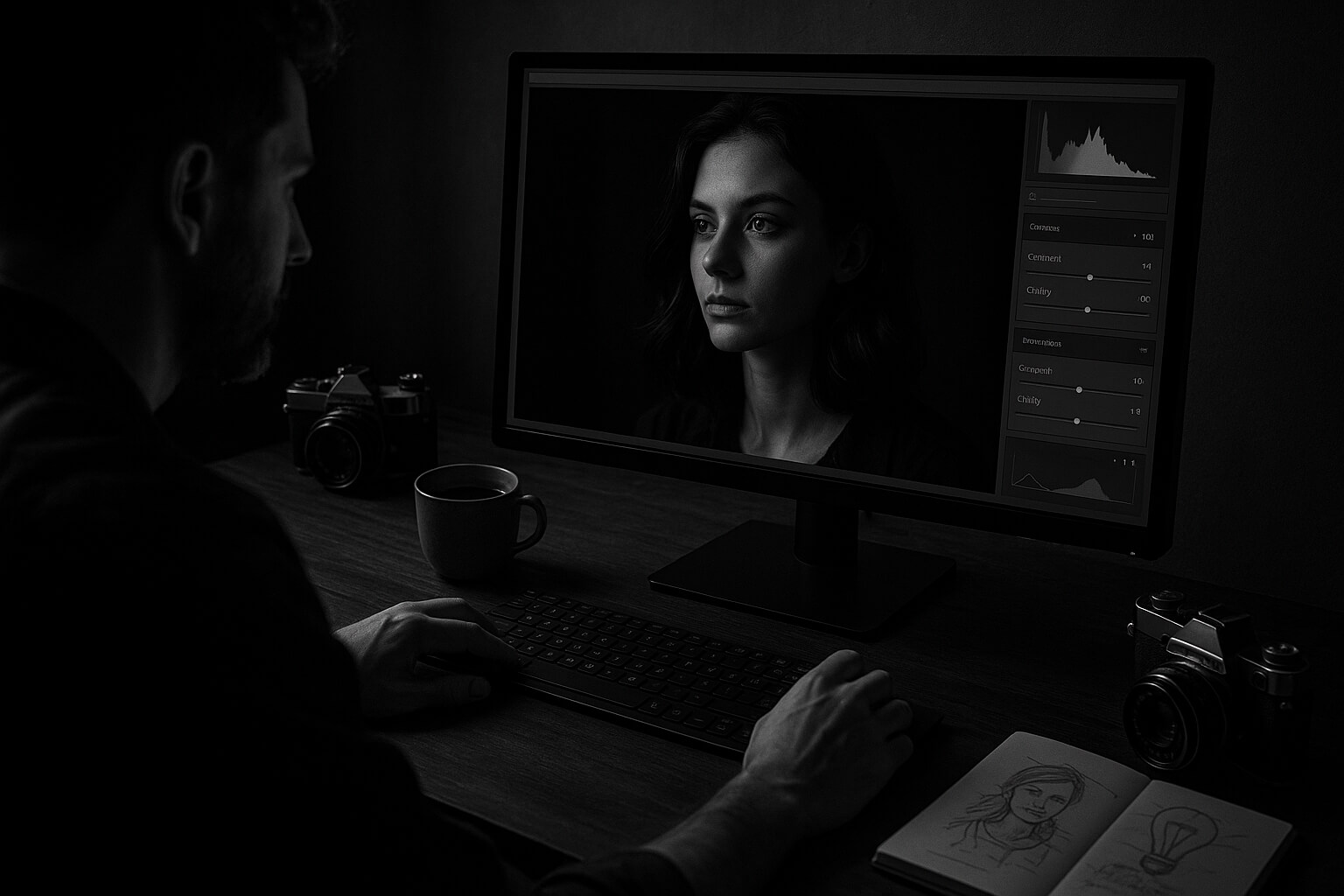June 03, 2025

Black and white photography is an art form that transcends the fleeting trends of color photography, capturing a raw, timeless beauty that invites the viewer to focus on what truly matters in a scene. The absence of color allows for a sharper focus on light, shadow, texture, and composition, creating a sense of intimacy and emotional depth that colored images often fail to evoke. Whether you’re just starting your photography journey or are an experienced professional refining your craft, this guide will show you how to edit black and white photos to create striking, dramatic images that resonate with your audience.
Why choose black and white? The beauty of monochrome photography lies in its ability to remove distractions. Color can sometimes draw attention away from important visual elements, but black and white photography allows the composition, the subject, and the story of the image to shine through.
When you convert an image to black and white, you invite the viewer to experience the scene through a simplified lens. It's not just about removing color; it's about stripping away excess to reveal the emotion and the mood behind the image. This type of photography allows you to accentuate contrast, texture, and light, enabling you to craft compositions that are both visually powerful and emotionally charged.
Interested in turning your photography passion into a thriving business? Here's a step-by-step guide on how to scale your photography efforts and take the leap into full-time professional work.
Step 1: Begin with a High-Quality RAW File
Starting with a high-quality RAW file is the key to achieving the best results when editing black and white images. RAW files contain more data than JPEGs, which means you’ll have more flexibility to adjust your exposure, shadows, highlights, and contrast without losing details in your image.
Step 2: Convert to Black and White with Precision
A common mistake many photographers make is simply hitting the desaturate button to turn their image black and white. While this is a quick method, it often results in a flat, uninspiring image. To achieve a dramatic effect, you need to manually adjust your image's color channels to control how each color translates into grayscale.
Pro Tip: To create a more dramatic effect in portraits, increase the reds and yellows for warmer skin tones, while reducing the blues can make skies and shadows appear more intense and moody.
Step 3: Increase Contrast for Maximum Drama
Contrast is essential in creating the dramatic and emotional impact that black and white photography is known for. Without contrast, images can feel flat and lifeless. When you increase the contrast, you create a strong difference between the lightest highlights and the darkest shadows, which adds depth and dimension to your image.
If you're working with old black and white prints or vintage images, check out the best photo restoration software in 2025 to restore the details and clarity of your precious memories.
Step 4: Sharpen Texture for Added Detail
One of the most striking qualities of black and white photography is its ability to reveal textures. With the absence of color, every detail—whether it’s the roughness of a stone, the grain of wood, or the delicate wrinkles on a person’s face—becomes an important part of the composition.
By focusing on these small, often overlooked details, you can make your image feel richer, more tactile, and more intense.
Step 5: Add Vignettes and Film Grain for Atmosphere
To elevate the drama in your black and white photo, consider adding a vignette or applying film grain. These subtle adjustments can help to enhance the emotional atmosphere of the image, leading the viewer’s eye toward the focal point or creating a nostalgic, vintage feel.
Step 6: Apply Local Adjustments for Precision
Now that you’ve established the overall look and feel of your image, it’s time to fine-tune specific areas with local adjustments. These targeted edits allow you to enhance particular elements within the frame, ensuring that the photo is balanced and the focus is exactly where you want it.
Once you’ve mastered the art of dramatic black and white photography, why not share your work with the world—and even make money from it? There are countless online platforms where photographers can sell their images, from stock photography sites to fine art marketplaces.
To help you get started, check out the best websites to sell your photos in 2025. Whether you’re interested in selling on stock platforms or want to showcase your fine art prints, there’s a marketplace for every type of photography.
If you’re interested in generating passive income through photography, learn how to sell your photos online for passive income and take advantage of the many opportunities available.
Additionally, if you’re considering turning your hobby into a full-fledged business, take a look at this step-by-step guide on how to start a photography business from scratch.
Creating dramatic black and white photography isn’t just about removing color—it’s about embracing the power of contrast, texture, and light to create emotion and depth in your images. With the right techniques, you can transform an ordinary shot into a powerful visual narrative that speaks to your audience on a deeper level.
Now that you’re equipped with the tools to enhance your monochrome images, grab your favorite editing software and start experimenting. Whether you’re working with portraits, landscapes, or abstract compositions, your next black and white masterpiece is just a few edits away.
Stay up to date with the newest tips, gear reviews, and step-by-step guides to elevate your photography journey from home and beyond.